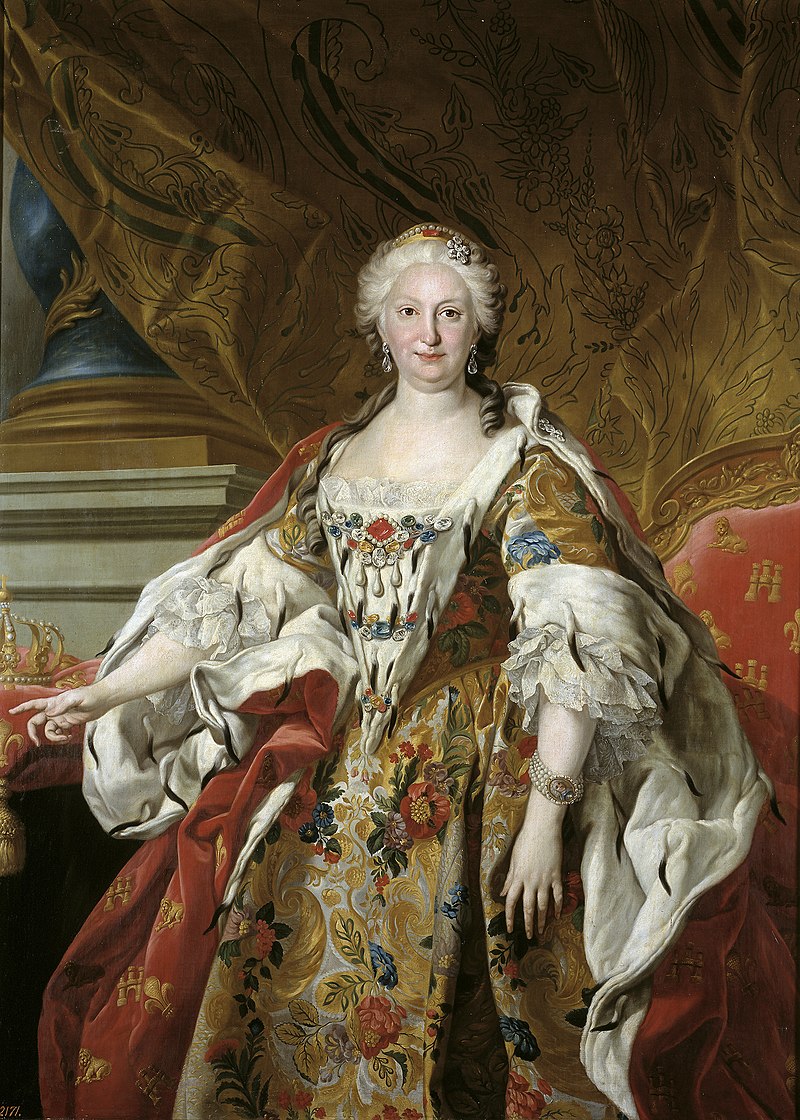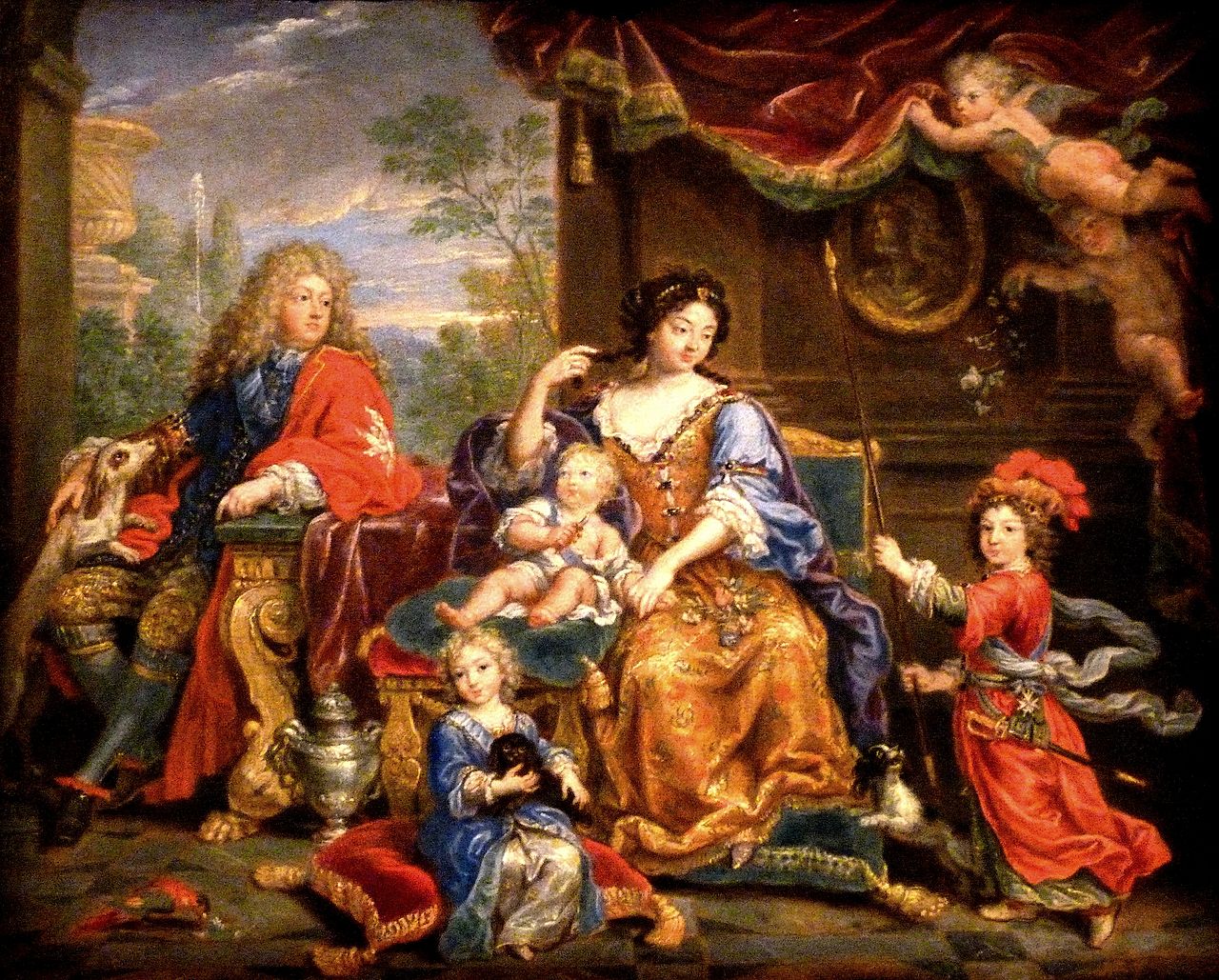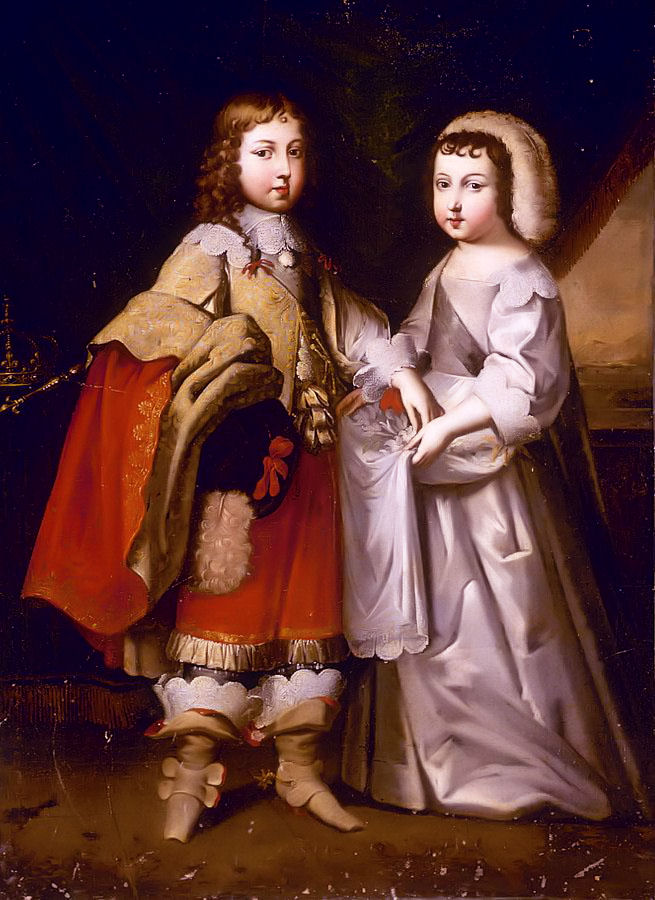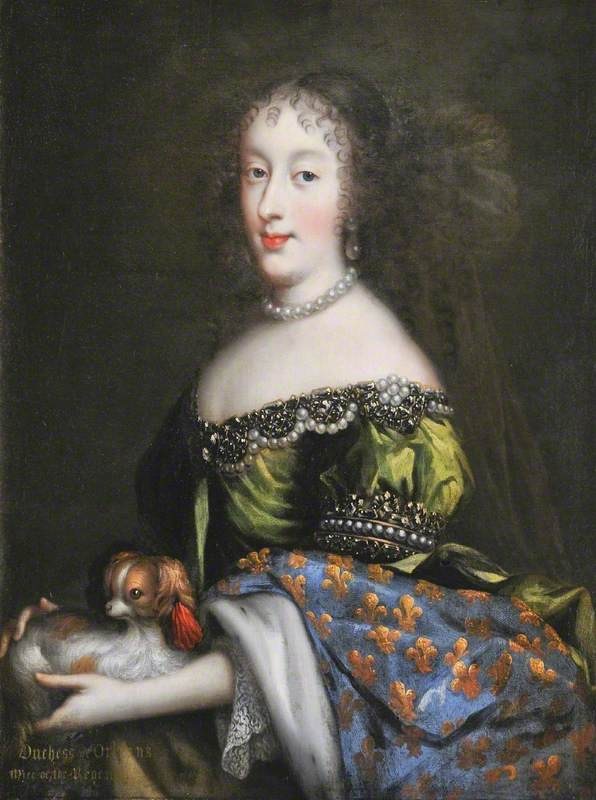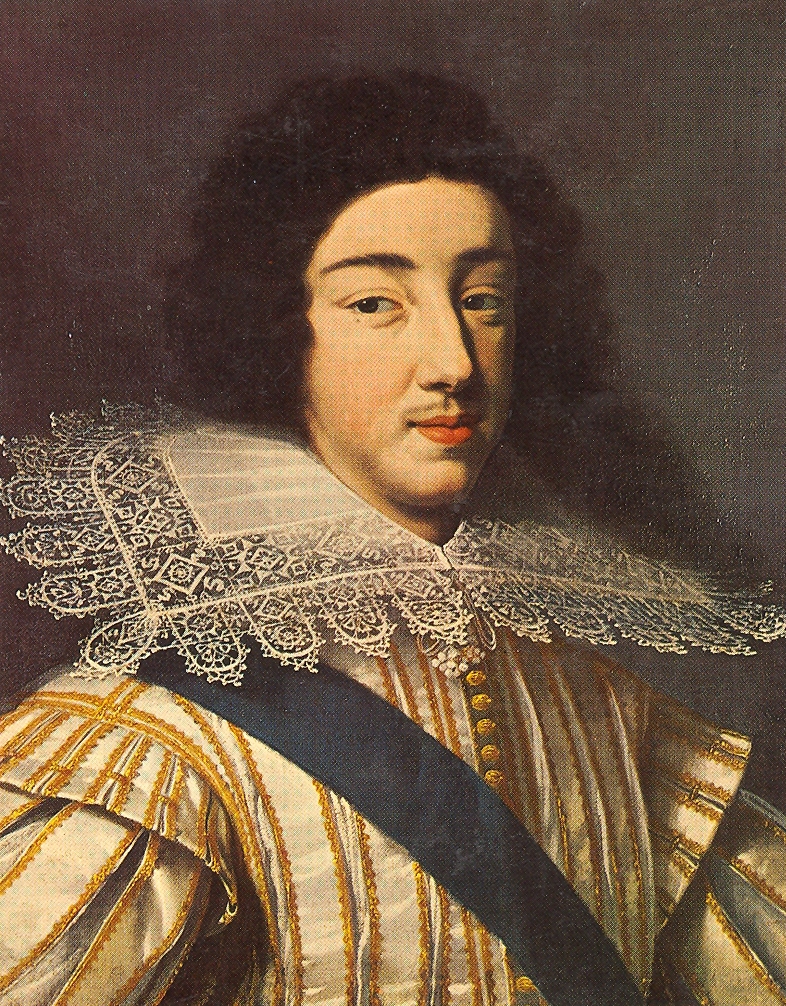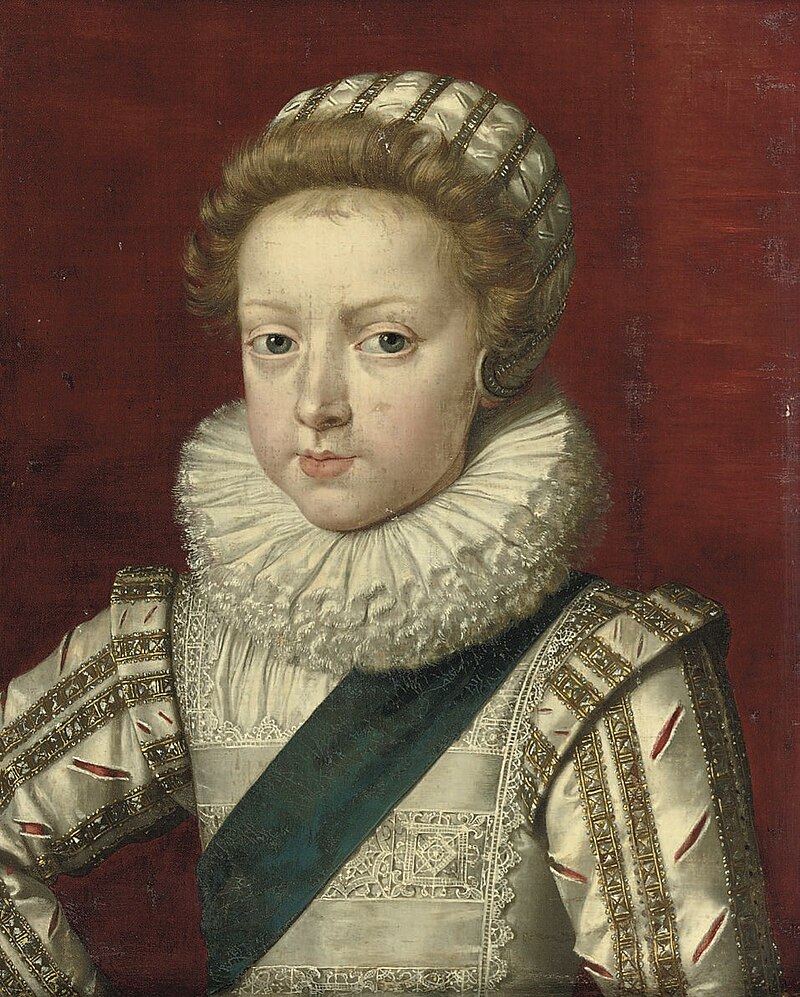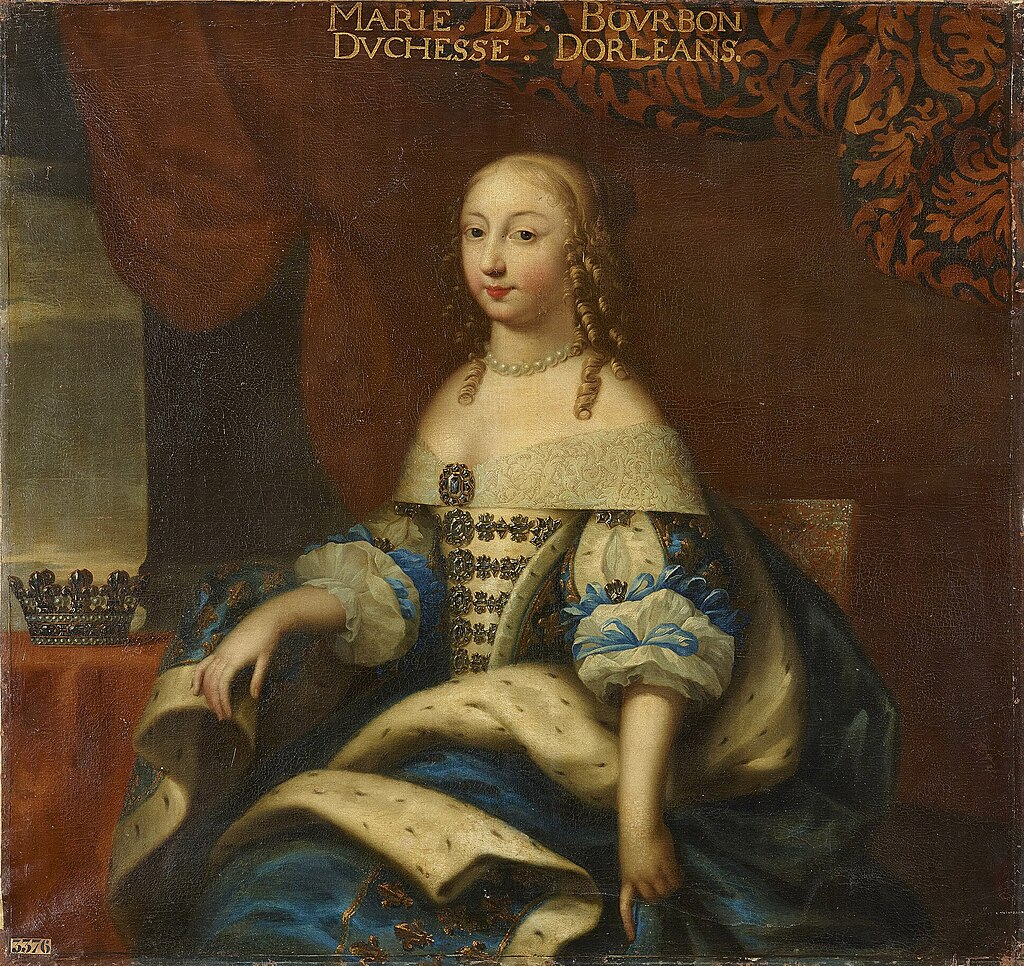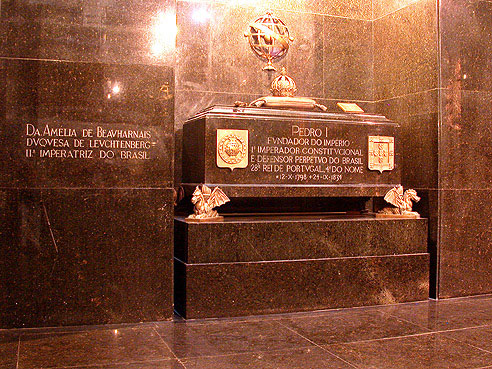by Susan Flantzer
© Unofficial Royalty 2019

Louis, Dauphin of France; Credit – Wikipedia
Louis, Dauphin of France was the elder son and heir apparent of his father Louis XV, King of France. Unfortunately, like several other Dauphins that preceded him, Louis died prematurely and never became King of France. Born on September 4, 1729, at the Palace of Versailles, Louis was the elder of the two sons and the fourth of the ten children of King Louis XV of France and Marie Leszczyńska, daughter of Stanisław I, King of Poland and Catherine Opalińska.
Louis had nine siblings:
- Louise Élisabeth, twin of Anne Henriette (1727 – 1759), married Felipe, Infante of Spain, Duke of Parma, had three children
- Anne Henriette, twin of Louise Élisabeth (1727 – 1752), unmarried, died from smallpox
- Marie-Louise (1728 – 1733), died in childhood
- Philippe of France, Duke of Anjou (1730 – 1733), died in childhood
- Marie Adélaïde (1732 – 1800), unmarried
- Victoire Louise Marie Thérèse (1733 – 1799), unmarried
- Sophie Philippine Élisabeth Justine (1734 – 1782), unmarried
- Marie Thérèse Félicité (1736 – 1744), died from smallpox
- Louise Marie (1737 – 1787), became a nun, beatified in 1873 and known as Blessed Thérèse of Saint Augustine

Louis, Dauphin of France at age nine; Credit – Wikipedia
Until he was seven years old, Louis was raised by the royal governess Charlotte de La Motte Houdancourt, Duchess of Ventadour who had also been the governess of Louis’ father. Madame de Ventadour was credited with saving the life of Louis’ father, the future Louis XV, when a measles epidemic killed his father, mother, and elder brother. Louis’ elder brother died due to being bled by the doctors. Madame de Ventadour locked herself and the two-year-old future Louis XV, who was ill with the measles, in the nursery and refused to let the doctors see him.
When he was seven-years-old, Louis was put under the care of tutors Jean-François Boyer, Bishop of Mirepoix and Joseph Giry de Saint Cyr. Louis was a brilliant student. He had an excellent knowledge of Latin, spoke fluent English, which was rare for a prince of his time, and excelled in many other subjects. Like his sisters, Louis was an excellent musician. However, he hated physical activity and gave up hunting after accidentally killing one of his men. Louis granted his protection to the widow and his descendants, and a pension was paid by the various governments until the extinction of the line of the victim under the Third Republic (1870 – 1940).

Maria Teresa Rafaela, Infanta of Spain, 1st wife of Louis, Dauphin of France; Credit – Wikipedia
In 1739, King Louis XV negotiated a marriage for his son Louis with Maria Teresa Rafaela, Infanta of Spain, daughter of Felipe V, King of Spain (who had been born Philippe of France, Duke of Anjou, a grandson of Louis XIV, King of France) and his second wife Elisabeth Farnese. The purpose of this marriage was to strengthen the alliance of Bourbon France and Bourbon Spain. Maria Teresa Rafaela’s mother would not allow her thirteen-year-old daughter to go to France until she was older.
A proxy marriage was held in Madrid, Spain on December 18, 1744. Maria Teresa Rafaela left Spain in January 1745 and arrived at Versailles on February 21, 1745. Nineteen-year-old Maria Teresa Rafaela and sixteen-year-old Louis were officially married at the Palace of Versailles on February 23, 1745. Louis and Maria Teresa Rafaela had one daughter Princess Marie Thérèse of France, born on July 19, 1746. Sadly, Maria Teresa Rafaela died three days later, on July 22, 1746, at the age of twenty. Louis’ sorrow was so intense that his father Louis XV had to physically drag his son away from Maria Teresa Rafaela’s deathbed. Louis and Maria Teresa Rafaela’s daughter did not survive to her second birthday, dying on April 27, 1748.
Even though he grieved for his first wife, Louis knew he had to marry again to provide for the succession to the French throne. His first wife’s brother Fernando VI, King of Spain offered his youngest sister Maria Antoinetta but Louis XV wanted to expand France’s diplomatic channels. France and Saxony had been on opposing sides in the recent War of the Austrian Succession and a marriage between a Princess of Saxony and the Dauphin of France would form a new alliance between the two countries.

Maria Josepha of Saxony; second wife of Louis, Dauphin of France; Credit – Wikipedia
On January 10, 1747, Louis was married by proxy in Dresden, Saxony to fifteen-year-old Maria Josepha of Saxony, daughter of Friedrich August II, Prince-Elector of Saxony and King of Poland and Archduchess Maria Josepha of Austria, daughter of Joseph I, Holy Roman Emperor. A second marriage ceremony took place in person at the Palace of Versailles on February 9, 1747. At the time of the marriage, Louis was still grieving for Maria Teresa Rafaela but Maria Josepha was patient and won his heart a little at a time.
Louis and Maria Josepha of Saxony had eight children including three Kings of France:
- Marie Zéphyrine (1750 – 1755), died in childhood
- Louis Joseph, Duke of Burgundy (1751 – 1761), died in childhood from tuberculosis
- Xavier of France, Duke of Aquitaine (1753 – 1754), died in infancy
- Louis XVI, King of France (1754 – 1793), married Archduchess Maria Antonia of Austria and had four children, executed during the French Revolution
- Louis XVIII, King of France (1755 – 1824), married Marie Joséphine of Savoy, no children
- Charles X, King of France (1757 – 1836), married Marie Thérèse of Savoy, had four children
- Marie Clotilde (1759 – 1802), married Carlo Emanuele IV, King of Sardinia, no children
- Élisabeth (1764 – 1794), unmarried, executed during the French Revolution
Louis was a pious man, faithful to his wife, and concerned about the welfare and education of his children. Like her husband, Maria Josepha was very devout. Louis and Maria Josepha were a counterbalance to the behavior of Louis XV, who had many mistresses and many illegitimate children, and his court. The couple was not fond of the various entertainments held at Versailles every week and preferred to stay in their apartments. Kept away from government affairs by his father, Louis was at the center of the Dévots, a group of religiously-minded men who hoped to gain power when he succeeded to the throne.

Allegory on the Death of the Dauphin by Louis-Jean-François Lagrenée, 1765; Credit – Wikipedia
However, Louis never succeeded to the throne. He died of tuberculosis at the Château de Fontainebleau in France on December 20, 1765, at the age of 36. According to Louis’ last wishes, he was buried at the Cathedral of Saint-Étienne in Sens, France, and his heart was buried at the Basilica of Saint-Denis, near the grave of his first wife. Maria Josepha, who had cared for Louis during his last illness, also contracted tuberculosis. She died March 13, 1767, at the age of 35 and was buried with her husband.
In March 1794, during the French Revolution, Louis and Maria Josepha’s tomb was desecrated and their remains were thrown into a mass grave. After the restoration of the monarchy, on the orders of Louis and Maria Josepha’s son King Louis XVIII, their remains were found, their tomb was restored and they reinterred at the Cathedral of Saint-Étienne in Sens, France on December 8, 1814.

Louis and Maria Josepha’s restored tomb; Credit – Par Aubry Gérard — Travail personnel, CC BY-SA 4.0, https://commons.wikimedia.org/w/index.php?curid=42182840
This article is the intellectual property of Unofficial Royalty and is NOT TO BE COPIED, EDITED, OR POSTED IN ANY FORM ON ANOTHER WEBSITE under any circumstances. It is permissible to use a link that directs to Unofficial Royalty.
Works Cited
- De.wikipedia.org. (2018). Louis Ferdinand de Bourbon, dauphin de Viennois. [online] Available at: https://de.wikipedia.org/wiki/Louis_Ferdinand_de_Bourbon,_dauphin_de_Viennois [Accessed 1 Nov. 2018].
- En.wikipedia.org. (2018). Louis, Dauphin of France (son of Louis XV). [online] Available at: https://en.wikipedia.org/wiki/Louis,_Dauphin_of_France_(son_of_Louis_XV) [Accessed 1 Nov. 2018].
- En.wikipedia.org. (2018). Maria Josepha of Saxony, Dauphine of France. [online] Available at: https://en.wikipedia.org/wiki/Princess_Maria_Josepha_of_Saxony_(1731%E2%80%931767) [Accessed 1 Nov. 2018].
- En.wikipedia.org. (2018). Maria Teresa Rafaela of Spain. [online] Available at: https://en.wikipedia.org/wiki/Maria_Teresa_Rafaela_of_Spain [Accessed 1 Nov. 2018].
- Fr.wikipedia.org. (2018). Louis de France (1729-1765). [online] Available at: https://fr.wikipedia.org/wiki/Louis_de_France_(1729-1765) [Accessed 1 Nov. 2018].





